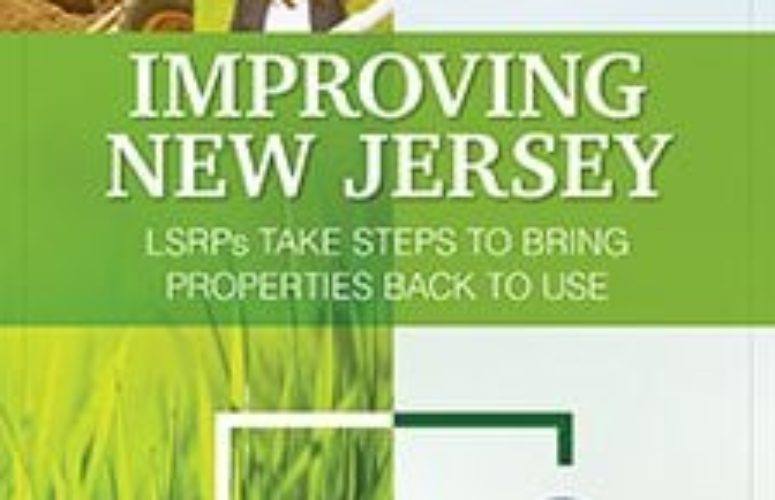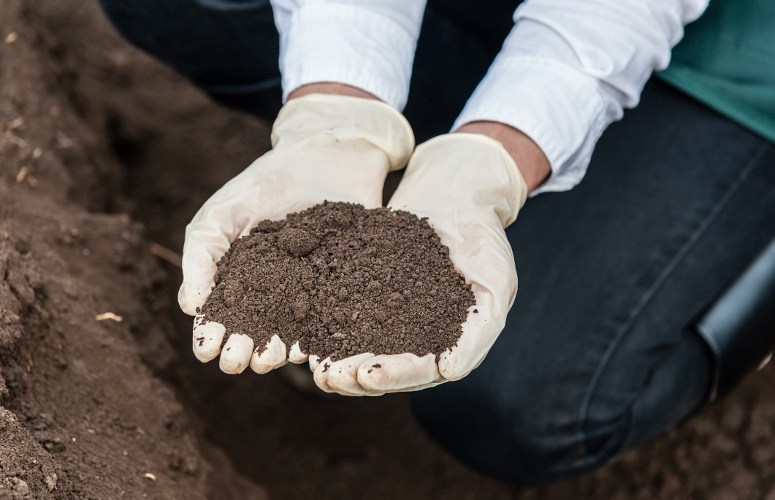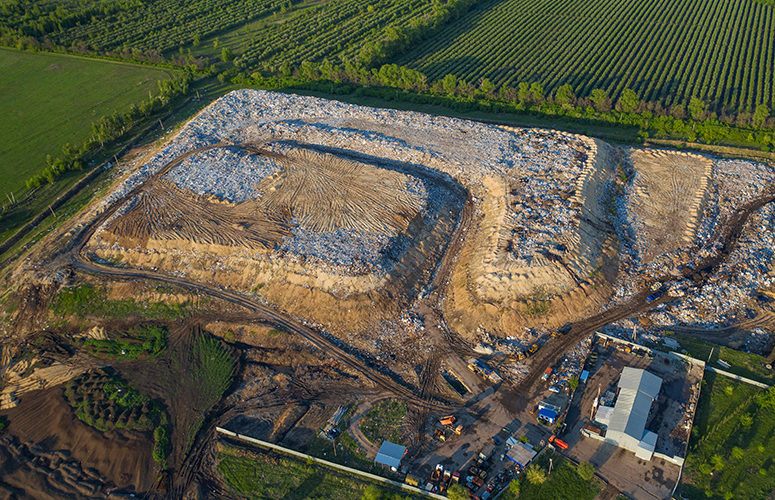
Building on Success
LSRPs and New Jersey Mark a Decade of Progress
On Mar 2, 2019New Zones Create Opportunities for Brownfields
By Charlene Drake, LSRP, and Candace Baker, LSRP, Langan Engineering
Will the latest economic development tool, the Opportunity Zone program, help stimulate redevelopment of brownfields sites? Camden may hold a possible answer to that question.
Enacted as part of the 2017 federal Tax Cuts and Jobs Act, the Opportunity Zone program is intended to funnel investment towards distressed communities – the very same communities that are often home to contaminated, underutilized properties called brownfields.
Camden has seven census tracts and Camden County has 11 census tracts that have been designated as Opportunity Zones. The New Jersey Department of Environmental Protection (NJDEP) has mapped 211 known contaminated sites in Camden County, 150 of which are located in Opportunity Zones.
Around the state, more than 75 communities have at least one area designated as an Opportunity Zone. This represents every county in the state.
Regulations are still in development, but in general, under the program, investors in Qualified Opportunity Funds can defer gains and reduce their taxes. A Qualified Opportunity Fund is an investment vehicle set up for investing in eligible property in an Opportunity Zone. If the investment in a Qualified Opportunity Fund is held for 10 years, the capital gains on that investment will be tax free.
Historically, many successful developers have utilized economic incentives to help offset the cost of investigation and site remediation at brownfields sites. Most recently, Camden was a designated Garden State Growth Zone, benefitting from tax abatements from the Economic Opportunity Act.
Developers used these and other programs to redevelop land in Camden for the NBA 76ers training complex, the new Subaru of America Headquarters and waterfront development, to name a few.
What will be needed to stimulate more brownfield redevelopment in Camden and beyond? Experts say the key will be clear federal guidance, proactive local understanding and leadership, monitoring and a strong pipeline of good projects ready to go and awaiting capital investment.
Although the program is new, developers around the country are already using it to spur development.
Outside Chicago, Scott Aschoff, partner at East Chicago Gateway Partners, established one of the first Opportunity Zone Funds to raise capital and successfully close on a 440-acre brownfield property that is already attracting potential warehouse tenants.
“While being in an Opportunity Zone does not make a substandard investment a good one, being in a zone can make a really good location create outstanding returns,” he said.
McCabe: LSRPs and NJDEP Are Working Together
With the help of LSRPs, New Jersey is completing more remediations of contaminated sites, including complex cases, faster than ever before, New Jersey Department of Environmental Protection (NJDEP) Commissioner Catherine R. McCabe told a capacity crowd at the Second Annual Site Remediation Conference.
“The program is working,” she said.
The LSRPA conference, attended by more than 480 site remediation professionals, was held over two days at the Hyatt Regency in New Brunswick. Commissioner McCabe was the featured speaker of the conference, which also included vendors, networking, technical posters, and continuing education classes.
McCabe said LSRPs are partners with the NJDEP in site remediation and handle roughly 80 percent of the 14,000 cleanup projects underway at any given time.
Assistant NJDEP Commissioner Mark Pedersen, who leads the Site Remediation Program, said that with the assistance of LSRPs, New Jersey is closing more site remediation cases than it opens each year.
Although the Site Remediation Reform Act (SRRA), now in its 10th year, is working, both McCabe and Pedersen said adjustments in the law are necessary to close loopholes and strengthen it. From 10 sessions with stakeholders – including developers, the LSRPA, and environmental justice groups – NJDEP has submitted proposed language for SRRA revisions to Sen. Bob Smith, D-Middlesex, who sponsored the original law.
Sen. Smith said the SRRA is one of the best laws New Jersey ever enacted, but after a decade of experience some tweaks are necessary. He outlined some of the proposed changes in the law, including revised definitions and clarifications of the meaning of an immediate environmental concern, and requirements for LSRPs.
At the conference, Caryn Barnes, LSRPA president for 2019, and a principal with Langan Engineering, thanked outgoing President Rodger A. Ferguson, Jr. Barnes said her main goal for 2019 is to elevate the profession of the LSRPs.
The LSRPA membership selected six members for either renewed terms or new terms on its board: Joe Postorino, Mark Pietrucha, Dudley Warner, Ben Alter, Rebecca Hollender and Marlene Lindhardt.
LSRPs, who help guide responsible parties through New Jersey’s regulations and standards, are required to renew their licenses every three years. As part of the requirements for license renewal, they must complete continuing education courses.
At the conference, LSRPs were able to take courses on a variety of topics, including ethics, vapor intrusion mitigation and management, PCB remediation, in-situ thermal remediation technologies, emerging contaminants, and professional judgment.
Managing the Uncertainty of Emerging Contaminants
By Theodoros “Ted” Toskos, LSRP, Senior Principal Geologist, Woodard & Curran
Contaminants of emerging concern are any compounds that we are beginning to suspect could be causing harm to human health or the environment. Through the “Unregulated Contaminant Monitoring Rule,” the United States Environmental Protection Agency collects data on unregulated contaminants found in drinking water.
Decisions are made about regulating and setting standards for these compounds based upon the results of the monitoring. A lot of uncertainty is associated with every new compound and standard that is added, such as their properties, sources, background levels, and how the regulatory framework may evolve with time.
As Licensed Site Remediation Professionals (LSRP), we are often called to sign off on sites that involve emerging contaminants. The first step is to take a good, broad look at the literature, and see what others have already learned.
“Emerging” implies that we, as a greater community, are aware of this contaminant and can take advantage of relevant and useful data that are already available. This information can be incorporated into the Conceptual Site Model (CSM) that the LSRP will use to make decisions and, ultimately, issue the Response Action Outcome for the site.
As an example, per- and polyfluoroalkyl substances (PFAS) are a large class of compounds with unique properties, wide use, and an uncertain regulatory framework. There is little precedent of technical and regulatory practice on how to manage these compounds.
Nevertheless, there is extensive literature that discusses their properties relevant to fate and transport and numerous studies regarding their history of use and occurrence in the environment. Properly filtered, this knowledge can help the LSRP manage and control the uncertainty associated with this class of newly-regulated compounds.
The LSRP can then use professional judgment to apply this information to their site and begin building a CSM. By coupling the geochemical behavior of these surfactant compounds with the site geologic and hydraulic model, the LSRP begins to develop an understanding of fate and transport and sets the basis for assessing the potential for impacts to receptors. Once the CSM is assembled, the LSRP can consider uncertainties and how to best mitigate them, based on facts and data.
Remediating sites with emerging contaminants presents many challenges. A focused CSM that carefully combines literature, data and site information is a solid framework within which to assess and mitigate the uncertainties associated with emerging contaminants.
The Goal of the RAO
By Kassidy Klink, LSRP, Peak Environmental LLC
Most clients are concerned about three things related to the environmental case for their property: time, cost and the goal of the Response Action Outcome (RAO). An RAO is the capstone document that, to many, signifies the end of an environmental obligation and closes a case.
But there are different RAO types that may be better suited to different environmental conditions. Your Licensed Site Remediation Professional (LSRP), who issues the RAO, must understand your property objectives – residential redevelopment, refinancing, etc. – prior to recommending a plan and a specific RAO type.
The most straightforward is the Unrestricted Use RAO. This means that no contamination remains at your property or area of concern greater than an applicable standard and no institutional or engineering controls are necessary.
If soil or groundwater contamination remain at your property, but no engineering control, such as an asphalt cap, is required, then a Limited Restricted Use RAO may be applicable. Soils in this scenario require a deed notice that prohibits residential use of the property.
For groundwater, a natural attenuation remedy must be implemented unless groundwater impacts are only due to historic fill. The New Jersey Department of Environmental Protection (NJDEP) will need to approve a Classification Exception Area to restrict groundwater use in a specified area and approve a Remedial Action Permit (RAP) application in the vast majority of Limited Restricted Use RAO cases.
If an engineering control such as a cap or pump and treat system is necessary, your LSRP may be able to issue a Restricted Use RAO. Like a Limited Restricted Use RAO, an institutional control would also be necessary. The NJDEP must also approve a RAP application based upon your institutional and engineering controls. RAP approval may also require a long-term obligation to monitor and maintain engineering controls, and a Financial Assurance mechanism such as a letter of credit.
An RAO may be issued for an entire property, but it also may be issued only for an area of concern. So, some areas can be closed with an RAO while addressing other areas that require additional time. This RAO method could lower your Annual Remediation Fee to the NJDEP by reducing the number of areas of concern.
Understanding your RAO options may save time and money as you work towards case closure. Partnering with an LSRP who keeps your goals in mind is crucial to success.
Am I Performing Adequate Due Diligence?
By Chemmie Sokolic, Director of Due Diligence Services, Whitman
Performing due diligence for a commercial or industrial property can raise many questions.
Is a Phase I Environmental Site Assessment (ESA) adequate or unnecessary? How long will it take? How much will it cost? What amount of risk and potential liability is acceptable?
When performing due diligence to obtain innocent purchaser protection in New Jersey, one needs to perform both an ASTM Phase I ESA and a Preliminary Assessment (PA).
A Phase I ESA or PA helps provide protections against certain environmental liabilities, risks and concerns – specifically, the federal Comprehensive Environmental Response, Compensation and Liability Act (CERCLA) or the New Jersey Spill Act. But it doesn’t protect against all liabilities.
For example, these assessments typically don’t include an evaluation for the presence of wetlands, asbestos, lead-based paint, or radon. Nor do they include an evaluation of the building’s structural or mechanical condition, an evaluation of the building’s energy use or waste management efficiency, or whether the facility operations are in current compliance with applicable state or federal regulations and requirements.
It’s important to know which assessments you need, if any. Not all these due diligence concerns are necessarily your due diligence concerns.
If you’re only planning on leasing a facility, determining the structural or mechanical integrity of the building envelope may be the landlord’s responsibility, not yours.
In litigation cases, a review of historical conditions and the regulatory status of the facility may be more apropos than a comprehensive site review of current conditions.
Although you may only need a limited scope of work today, identifying the presence of building construction restrictions, such as wetlands or engineering limitations, may be useful to know now, as you consider plans to expand the facility in the future.
So, are you paying too much for a needless, comprehensive due diligence assessment you don’t necessarily need, or should you perform more due diligence that’ll provide the protection you need and the comfort and peace of mind you expect?
If in doubt, find a consultant who specializes in environmental, engineering, and land use due diligence. Ask questions and expect questions in return.
If you still feel uncomfortable or don’t understand the answers provided, enquire further with other consultants to ensure you’ve made the best choice for your particular needs. Know your options, recognize your limitations, and understand your risk threshold.
Above all, be sure to work only with those you respect and trust.
Murphy Administration Focuses on Enforcing Natural Resource Damages
By Michael Poland, PE, LSRP, Owner Poland Environmental Consulting
New Jersey’s Attorney General filed three Natural Resource Damages (NRD) cases in August 2018, demonstrating that the Murphy administration will hold businesses liable for negative impacts to the state’s natural resources.
NRD claims arise from releases of hazardous substances that injured natural resources – surface water, groundwater, sediments and wetlands – or deprived the public of services like water supply, recreation, or ecological services. NRD cases make a financial claim regarding the loss in value and use of these natural resources.
The NRD cases filed in August 2018 were the first since 2008. When the cases were filed, Attorney General Gurbir S. Grewal stated, “Today is just the beginning. We are going to hold polluters accountable – no matter how big, no matter how powerful, no matter how long they’ve been getting away with it. And we’re sending a message to every company across the state: If you pollute our natural resources, we are going to make you pay.”
The three NRD cases were against a former canning facility in Warren County, a former petroleum refinery in Woodbridge, and a former manufactured gas plant in Atlantic City.
The state also filed cost recovery lawsuits in August 2018 for three contaminated sites where taxpayer money was used for remediation: a metals manufacturing site in Newark, a seafood plant in Newark and a former gas station in Woodbridge.
Completed remediation and the issuance of a Response Action Outcome (RAO) does not absolve the responsible party of NRD liability. All RAO letters provide a caveat for natural resources. The state has five years and six months from the end of remediation to decide whether to seek recovery for the cost of impacts to natural resources.
Licensed Site Remediation Professionals can play a key role in making remedial decisions concerning natural resources. Given the potential liability, responsible parties have a decision to make with their legal team and LSRP regarding the restoration of natural resources.
Responsible parties need to consider the magnitude of ecological risks posed from current or former site operations, through the ecological risk assessment process. This process will provide a framework for eco-remedial and risk management decision making that may ultimately limit NRD liability in the future.
The upcoming judicial decisions on the August 2018 cases will influence how responsible parties react to potential NRD and cost recovery matters in the future.
Knowing the Ropes Speeds Redevelopment
By Gary Brown, LSRP, President of RT Environmental Services
By comprehensively updating regulations and working with the private sector on guidance in many technical areas, New Jersey has helped Licensed Site Remediation Professionals (LSRPs) “know the ropes” and better prepare developers for the intricacies of site redevelopment opportunities.
The New Jersey Department of Environmental Protection (NJDEP) has done this in many ways. As an example, the frequent training available through webinars and events allows LSRPs to stay fresh on key permits, guidance and related issues.
This, in turn, helps LSRPs prepare sites quickly for redevelopment. For example, solar farms have been successfully developed at brownfield sites that include landfills, both where land filling has been completed and at active landfills where some sections are closed. Without the availability of NJDEP resources, these projects could be substantially delayed.
The technical education program that NJDEP has implemented for LSRPs is publicly available to everyone. Guidance and Powerpoint training documents are readily available on the NJDEP web site. This means that regulatory officials within NJDEP and other agencies, and municipal officials can find information at their fingertips when there are questions on remediation sites.
NJDEP officials also are readily available for consultation, which can be a valuable tool to LSRPs. This is particularly true where site conditions pose unusual issues of concern, such as groundwater discharging to surface water or site conditions that are not adequately covered by guidance documents.
Remediation projects in New Jersey can now be completed significantly faster than in the past.
The historical trend in contaminated sites was to complete remediation and then undertake redevelopment.
However, the ability of the LSRP to make decisions and interface with the redevelopment design means that fewer environmental professionals have to be involved in key decisions, and permitting can be better coordinated. In many cases, this means that remediation can be completed concurrently with redevelopment.
Given New Jersey’s industrial past, the LSRP program has been exactly what New Jersey needed. It serves the interests of land owners and those who want to expand residential, commercial and industrial facilities to benefit residents and workers throughout the State of New Jersey.
Related Articles:






